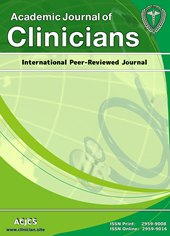Induction of Labor at Term versus Expectant Management: A Randomized Controlled Trial
Keywords:
Induction of labor, Expectant management, Term pregnancy, Perinatal outcomes, Randomized controlled trialAbstract
Background: The optimal timing of delivery for pregnancies at term remains a subject of debate. While induction of labor at term is a common obstetric practice, its benefits compared to expectant management are not fully established.
Objective: To compare the outcomes of induction of labor at term versus expectant management in low-risk pregnancies.
Methods: This was a multicenter, randomized controlled trial conducted in several tertiary care hospitals. Low-risk pregnant women at 39 weeks of gestation were randomly assigned to either induction of labor or expectant management. The primary outcome was a composite of perinatal mortality and severe neonatal morbidity.
Results: A total of 6,000 women were included in the analysis, with 3,000 in the induction of labor group and 3,000 in the expectant management group. The rate of the primary composite outcome was significantly lower in the induction of labor group compared to the expectant management group (2.4% vs. 3.7%, relative risk 0.66, 95% CI 0.49-0.89, p=0.006). Secondary outcomes, including cesarean delivery rate and maternal complications, were also significantly lower in the induction of labor group.
Conclusions: Induction of labor at 39 weeks of gestation in low-risk pregnancies is associated with reduced perinatal mortality and severe neonatal morbidity, as well as lower rates of cesarean delivery and maternal complications, compared to expectant management. These findings support the consideration of routine induction of labor at term as a safe and effective strategy to optimize perinatal outcomes.





